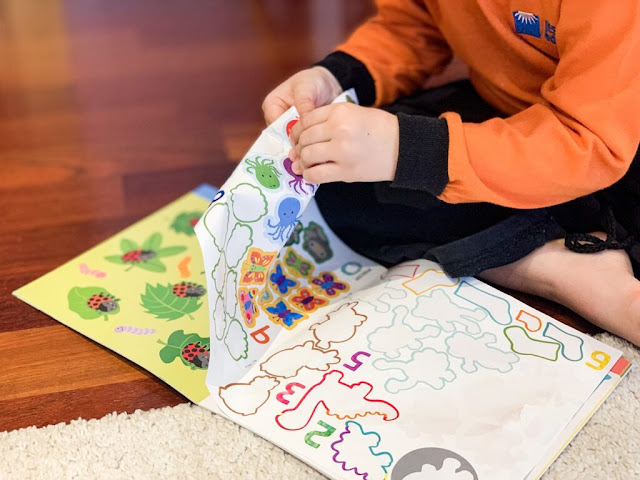The Impact of Sticker Books on Children's Learning
In the vibrant world of childhood education, innovative tools that engage and inspire young minds are invaluable. Among these, sticker books stand out as more than just playful accessories. They prove to be powerful educational assets, shaping a child's cognitive development in profound ways. This article delves into the impact of sticker books on children's learning, exploring the multifaceted benefits they bring to early education.
1. Sensory Stimulation: Sticker books engage multiple senses, providing a tactile experience that stimulates a child's sensory development. The act of peeling stickers, feeling their textures, and placing them on pages enhances fine motor skills, fostering coordination and dexterity. For more books use children books pucblsiher.
2. Language Development: Sticker books facilitate language development by encouraging communication. As children engage with the visuals, they express themselves verbally, describing the scenes, characters, and stories. This process not only builds vocabulary but also enhances communication skills.
3. Creativity and Imagination: The blank canvases of sticker book pages ignite children's creativity. The freedom to choose and place stickers allows them to create unique scenes, fostering imaginative thinking. This open-ended creativity is a valuable asset that extends beyond sticker play into various aspects of learning. Explore more activity books for kids.
4. Cognitive Skills Enhancement: Organizing, categorizing, and arranging stickers involve cognitive processes that promote logical thinking. Children make decisions about where each sticker should go, encouraging problem-solving skills and spatial awareness.
5. Storytelling Skills: Sticker books serve as a visual storytelling medium. Children construct narratives as they arrange stickers, developing storytelling skills and sequential thinking. This lays a foundation for literacy and comprehension skills crucial for later academic success. Read the best children story books.
6. Reinforcement of Concepts: Educational sticker books often incorporate themes aligned with early learning concepts. Whether introducing numbers, letters, or shapes, stickers become interactive tools for reinforcing these foundational ideas in an engaging and memorable way.
7. Focus and Concentration: The immersive nature of sticker activities requires children to focus on the task at hand. This sustained attention and concentration contribute to the development of essential learning skills, setting the stage for future academic endeavors.
8. Emotional Expression: Sticker books offer a non-verbal channel for emotional expression. Children can convey their feelings by choosing stickers that resonate with their emotions, providing a valuable outlet for self-expression and emotional development. Further more read fairy tales for kids.
9. Bonding and Social Skills: Sharing sticker books with peers or adults creates opportunities for social interaction. Collaborative sticker play enhances interpersonal skills, including sharing, taking turns, and cooperative decision-making, fostering positive social development.
10. Confidence Building: Completing sticker book activities instills a sense of accomplishment in children. This positive reinforcement contributes to confidence building, encouraging a positive attitude towards learning and academic challenges.
11. Educational Adaptability: Sticker books offer educational adaptability, catering to various learning styles. Whether visual, kinesthetic, or auditory learners, children can engage with stickers in ways that align with their preferred learning methods, making education more accessible and enjoyable.
12. Transition to Formal Learning: The skills acquired through sticker book activities seamlessly transition into formal learning settings. Children enter classrooms with enhanced motor skills, improved language development, and a foundation in basic concepts, providing a solid starting point for formal education.
Conclusion: Unlocking Learning Potential through Sticker Books In the tapestry of early education, sticker books emerge as dynamic tools that weave together various strands of learning. Beyond their colorful and playful exterior, these books serve as conduits for cognitive, emotional, and social development. From honing fine motor skills to fostering creativity and imagination, the impact of sticker books on children's learning is both profound and far-reaching. As educators, parents, and caregivers, recognizing and harnessing the educational potential of sticker books paves the way for a holistic approach to early childhood development, where learning becomes a joyous and enriching adventure.



Comments
Post a Comment